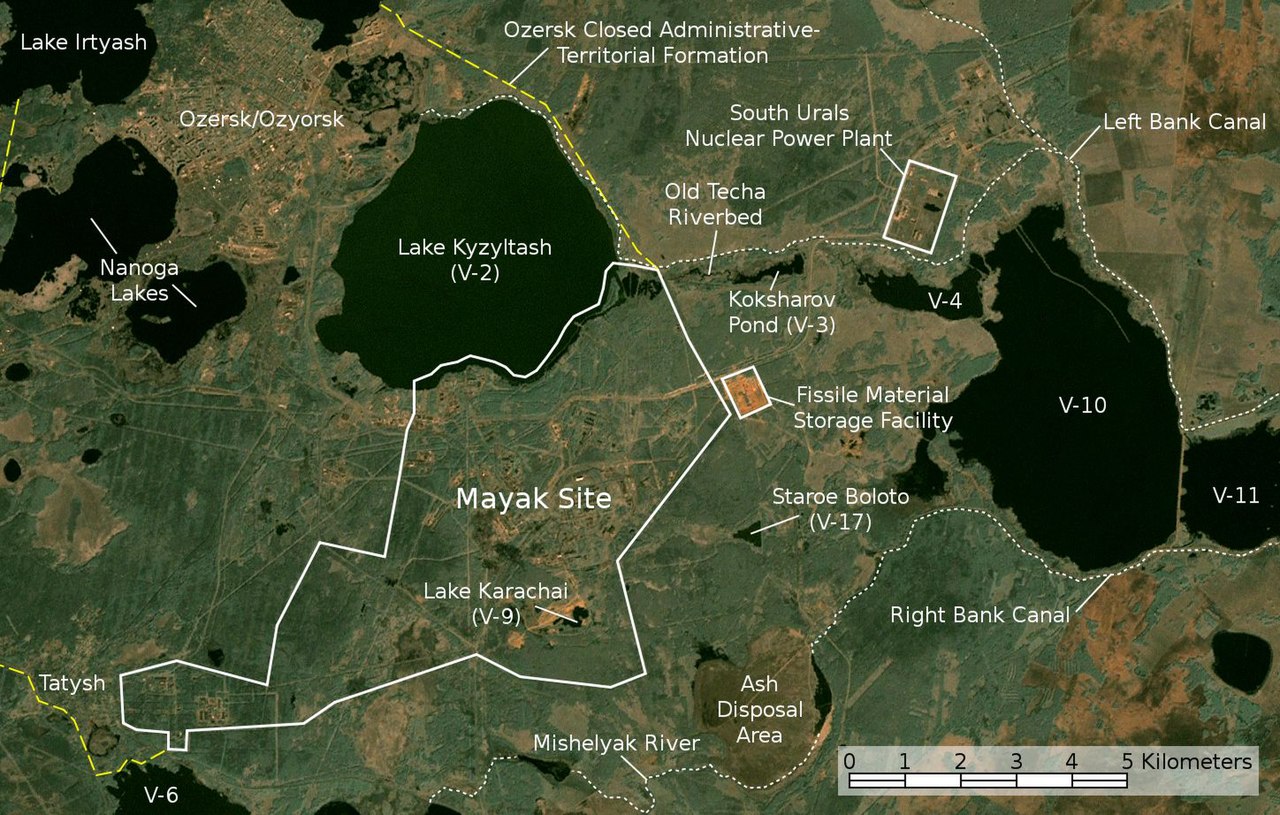Lake Karachay is the most radioactive lake on planet Earth. Its waters are so extremely irradiated, an hour of sunbathing on its shores would be enough to kill a human.
The radiation-ridden lake is found in the southern Ural mountains of central Russia. Its name, Karachay, means “black water” or “black creek” in the local Turkic languages, alluding to the grim levels of contamination associated with its water.
It became shockingly radioactive after serving as a waste dumping ground for the Soviet Union in the early days of the Cold War.
Not far from the lake is the vast Mayak nuclear complex, which sprawls for around 90 square kilometers (35 square miles). Constructed in the 1940s to create plutonium for the Soviet atomic bomb project, the colossal nuclear facility was part of Chelyabinsk-65, a closed city that was so secretive it didn’t appear on maps until 1989.
Stalin and his generals were desperate to keep up with the US after they dropped atomic bombs on Hiroshima and Nagasaki, so the construction of Mayak was rushed with little consideration of how to properly dispose of its waste material. By 1951, they were left with few other options than to use Lake Karachay as a reservoir in order to stop the radioactive waste from discharging into the Techa River.
It has been described as the “most polluted spot on Earth” by the DC-based think tank Worldwatch Institute, posing a serious problem for the local ecosystem.
Satellite image of the Mayak nuclear facility, showing Lake Karachay within.
Image credit: NASA WorldWind
An estimated 500 million Curies of beta-radioactive nuclides were poured into Lake Karachay in the 1950s, according to a report shared by the International Atomic Energy Agency. Not only are the reservoir’s contents a problem, but radioactive water has seeped into the groundwater and migrated some 4.8 kilometers (3 miles) from the lake.
The scale of contamination became starkly clear in the summer of 1967 when a drought hit the lake. The dried-out bed of the lake turned into dust that was blown over nearby settlements, showering dozens of local villages with significant levels of radiation.
In the 1990s, well after the lake ceased being a dumping ground, radiation levels of 600 roentgen were recorded just 10 meters (less than 33 feet) from the edge of the lake, according to the Natural Resources Defense Council. Standing here for too long would prove lethal. For context, exposure of 100 roentgen is enough to cause radiation sickness and 400 roentgen would likely kill most people within a month of exposure.
When the existence of Mayak was finally acknowledged amid the collapse of the Soviet Union in 1991, the impact of Lake Karachay’s radioactive legacy was finally revealed. The incidence of cancer had reportedly increased 21 percent among people living in the local area, along with a 25 percent increase in birth defects and a 41 percent increase in leukemia.
Fortunately, a $263 million project to clear up the mess has had some success in recent years. In 2016, Nuclear Engineering International reported that Lake Karachay had been filled with dirt, rock, and specialized concrete blocks. A statement on Mayak’s website said that monitoring during the first 10 months after sealing off the lake has shown “clear reduction of the deposition of radionuclides on the surface”, while the level of underground waters is “within the norm and shows no reason for concern”.
Nevertheless, the legacy of Lake Karachay’s radiation will continue to linger. As the report shared by the International Atomic Energy Agency concluded: “Even if Lake Karachay disappears forever from the Earth, problems related to it will remain.”
Source Link: Even Standing By The World's Most Radioactive Lake Could Kill You
